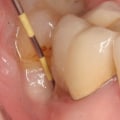The main difference between a root canal and a tooth extraction is that the affected tooth is extracted during a tooth extraction, while a root canal is meant to save the damaged tooth. Root canals have a higher success rate than extractions and have fewer complications associated with them. Dentists perform root canals to clean and restore an infected tooth. There is no need to extract or remove the tooth when a root canal is performed. After an extraction, your dentist can replace the missing tooth with a dental implant, which connects the root canal and the extraction and implant in some way.
With an extraction, you will usually be asked to place a dental bridge or implant to fill the gap of the missing tooth. On the other hand, when the damaged tooth cannot be seen from the mouth because it hasn't come out yet or has broken at the gum line, surgical extraction is necessary. When it comes to getting rid of an infected tooth, tooth extraction may seem like the easier option. However, your Puyallup cosmetic dentist might still recommend an extraction to keep your mouth and other teeth healthy. A simple extraction involves applying local anesthesia to the area before the dentist loosens the tooth with a dental instrument known as an elevator.
Afterward, the area where the tooth was extracted is subject to bone loss and can cause deterioration of the facial structure in that area (sunken cheeks). In addition, healing from an extraction takes longer and is often more painful than healing from a root canal, and extracting the tooth involves even more dental procedures and healing time to replace it later. If the pulp layer (dental nerve) of the tooth is damaged, sick, or even dead, then a root canal is necessary to save it. According to the American Association of Endodontists, patients who choose root canal treatment are six times more likely to describe it as painless than those who choose an extraction.






